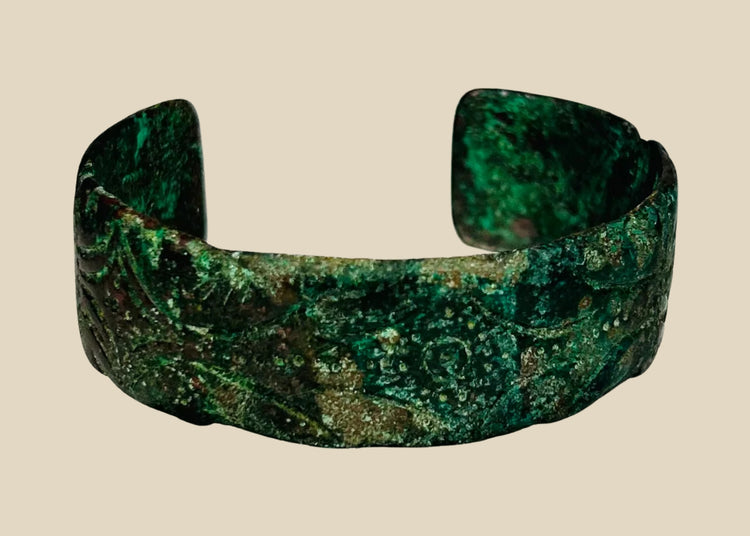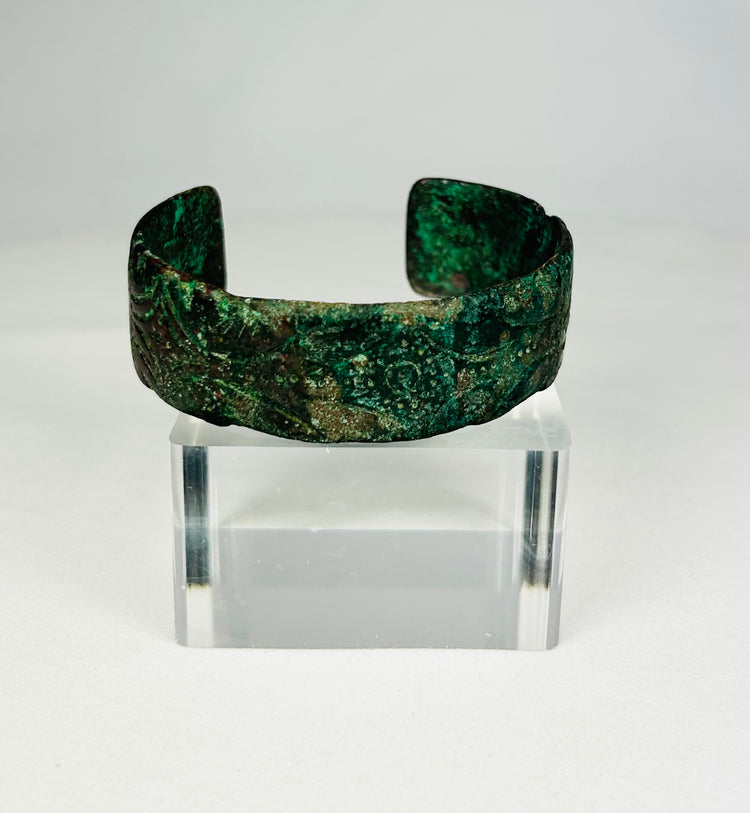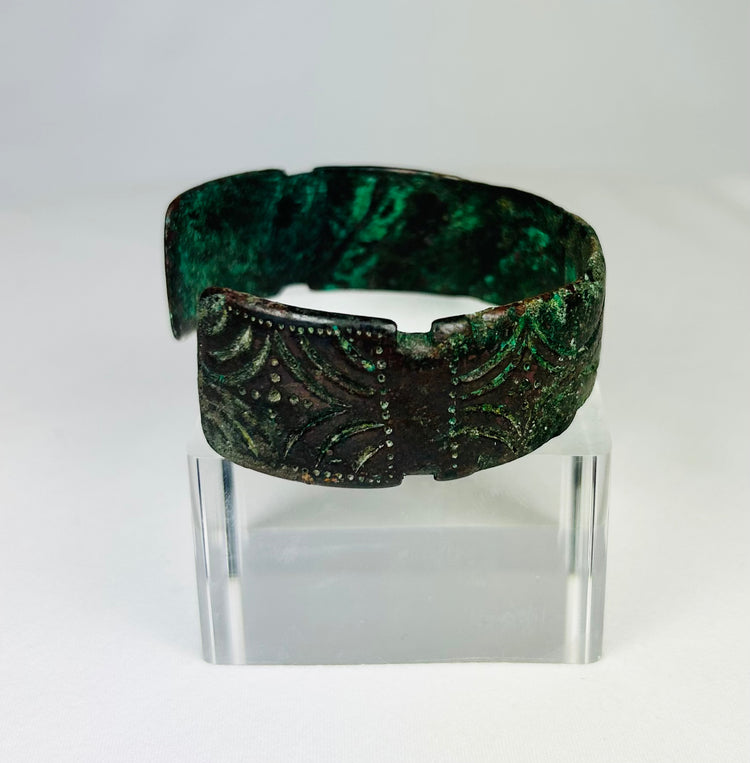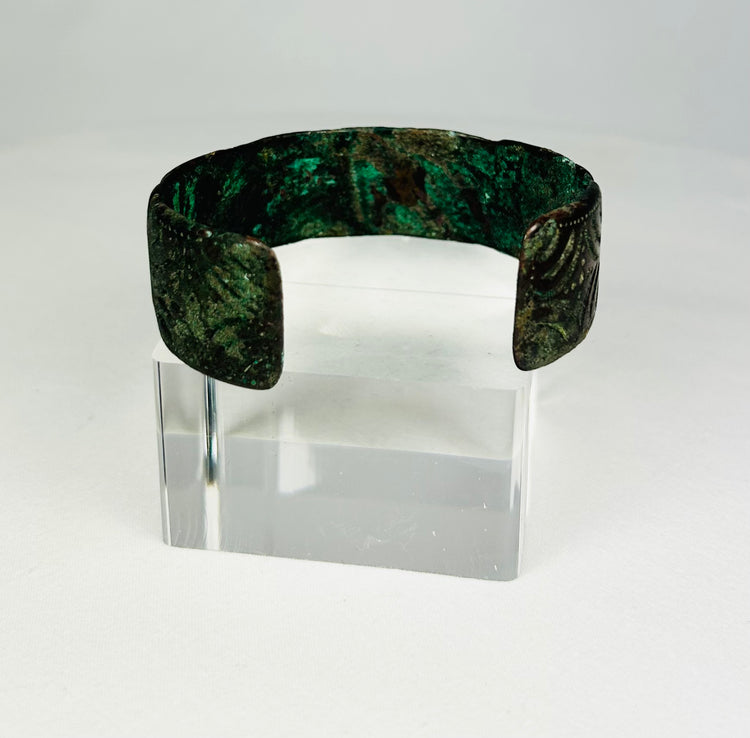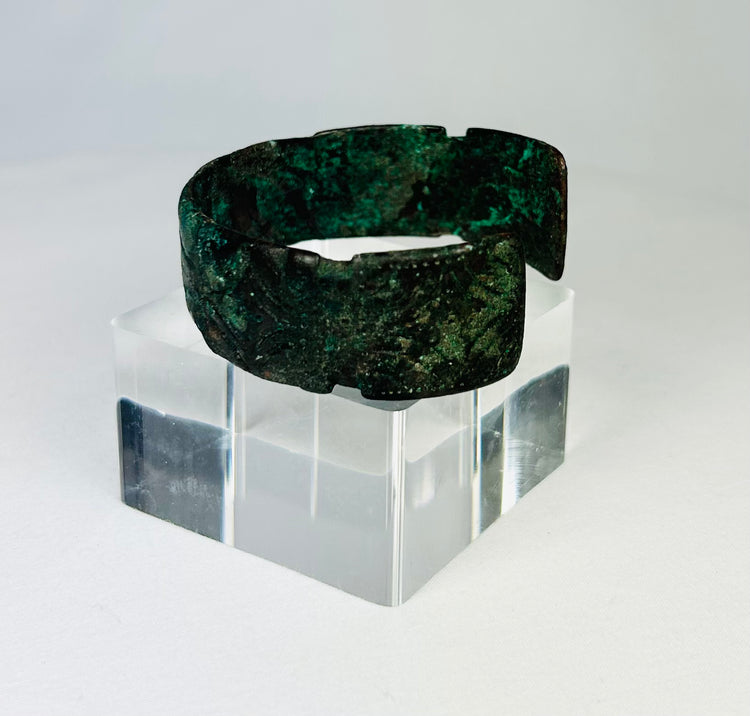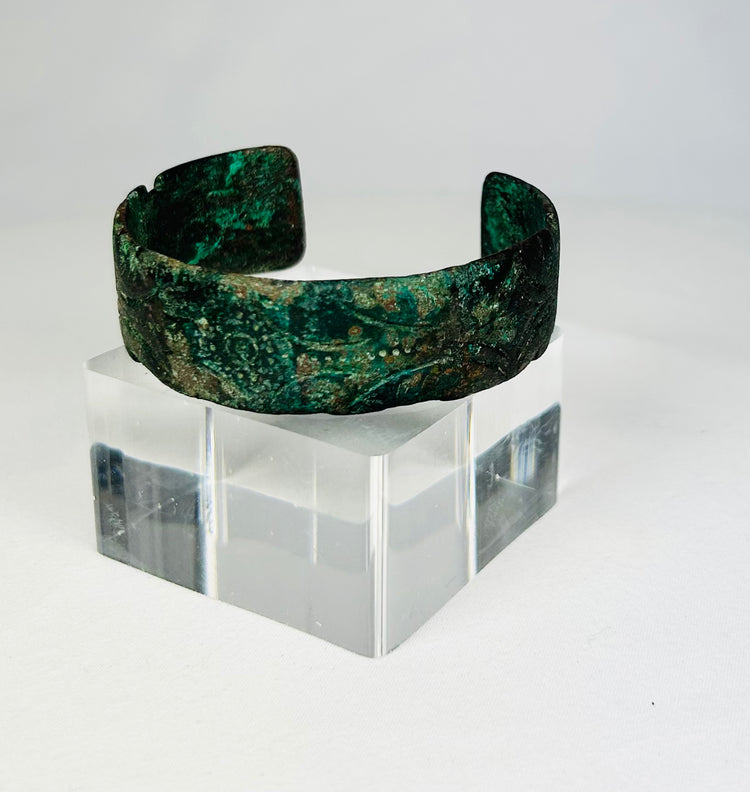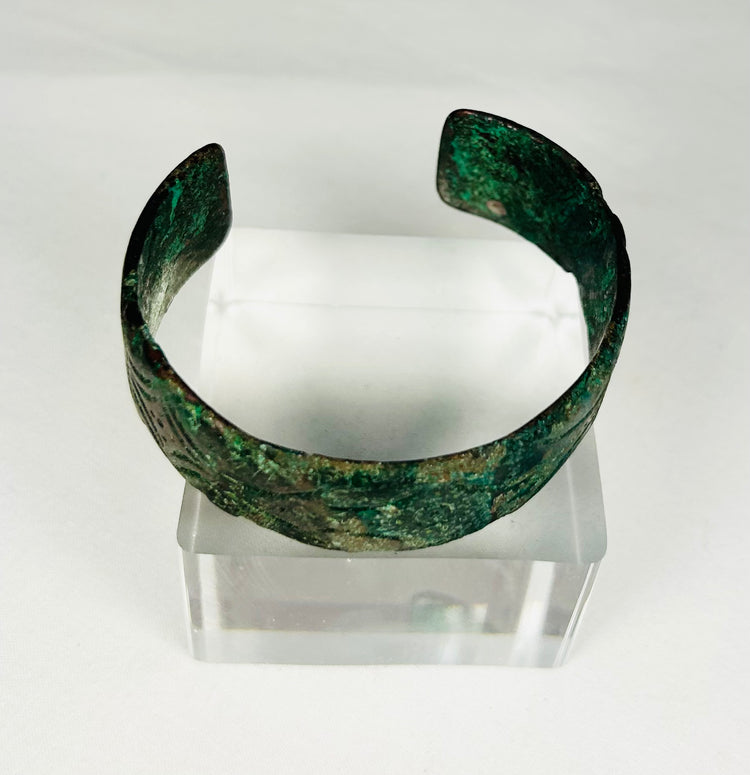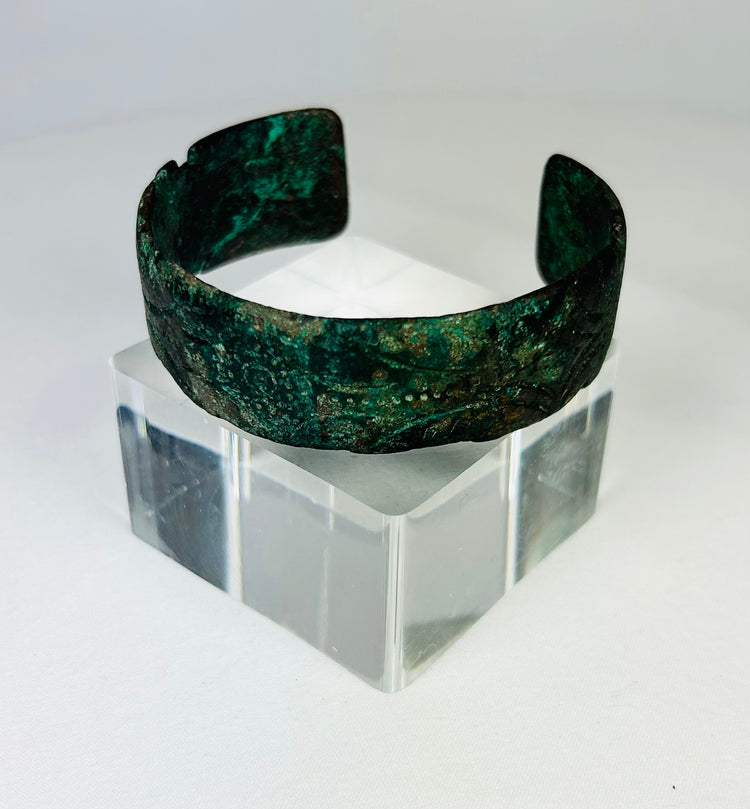Ancient Persian | Bronze Cuff Bracelet | Mid-1st Millennium AD
Description
More
Less
Historical Context & Origin
Region: Persia (modern-day Iran)
Material: Cast bronze with incised geometric and floral patterns; natural patina
Period: Mid–1st Millennium AD (Sassanian Empire, ca. 3rd–6th century CE)
Description
A rare and elegant ancient bronze cuff bracelet from Persia, finely decorated with etched geometric and floral motifs across its surface. The open-ended form allowed for both ease of wear and symbolic display, marking the bracelet as both ornament and status emblem. The craftsmanship reflects the refinement of Sassanian-period metalwork, where artistry and cultural identity merged in decorative objects for the elite.
Features
- Intricately incised floral and geometric patterns
- Open-ended design for wear and adjustment
- Rich green patina developed over centuries
- Elegant, wearable form with strong cultural resonance
Cultural Significance
Bracelets of this type were likely worn by individuals of elevated rank within Persian society. Beyond adornment, their decoration held symbolic weight—potentially tied to Sassanian ritual, cosmology, or heraldic motifs. Jewelry of this era served as visible expressions of identity, wealth, and spiritual alignment, underscoring the empire’s sophistication in art and craftsmanship.
Condition
Well-preserved for its age, with stable form and clearly legible decorative patterns. Surfaces display an attractive green patina from centuries of burial and oxidation. Minor surface wear and encrustations consistent with antiquity.
Dimensions (approximate)
Diameter: 3 in
Age
Mid–1st Millennium AD (ca. 3rd–6th century CE), Persian (Sassanian Empire)
Description
Historical Context & Origin
Region: Persia (modern-day Iran)
Material: Cast bronze with incised geometric and floral patterns; natural patina
Period: Mid–1st Millennium AD (Sassanian Empire, ca. 3rd–6th century CE)
Description
A rare and elegant ancient bronze cuff bracelet from Persia, finely decorated with etched geometric and floral motifs across its surface. The open-ended form allowed for both ease of wear and symbolic display, marking the bracelet as both ornament and status emblem. The craftsmanship reflects the refinement of Sassanian-period metalwork, where artistry and cultural identity merged in decorative objects for the elite.
Features
- Intricately incised floral and geometric patterns
- Open-ended design for wear and adjustment
- Rich green patina developed over centuries
- Elegant, wearable form with strong cultural resonance
Cultural Significance
Bracelets of this type were likely worn by individuals of elevated rank within Persian society. Beyond adornment, their decoration held symbolic weight—potentially tied to Sassanian ritual, cosmology, or heraldic motifs. Jewelry of this era served as visible expressions of identity, wealth, and spiritual alignment, underscoring the empire’s sophistication in art and craftsmanship.
Condition
Well-preserved for its age, with stable form and clearly legible decorative patterns. Surfaces display an attractive green patina from centuries of burial and oxidation. Minor surface wear and encrustations consistent with antiquity.
Dimensions (approximate)
Diameter: 3 in
Age
Mid–1st Millennium AD (ca. 3rd–6th century CE), Persian (Sassanian Empire)
You May Also Like






















